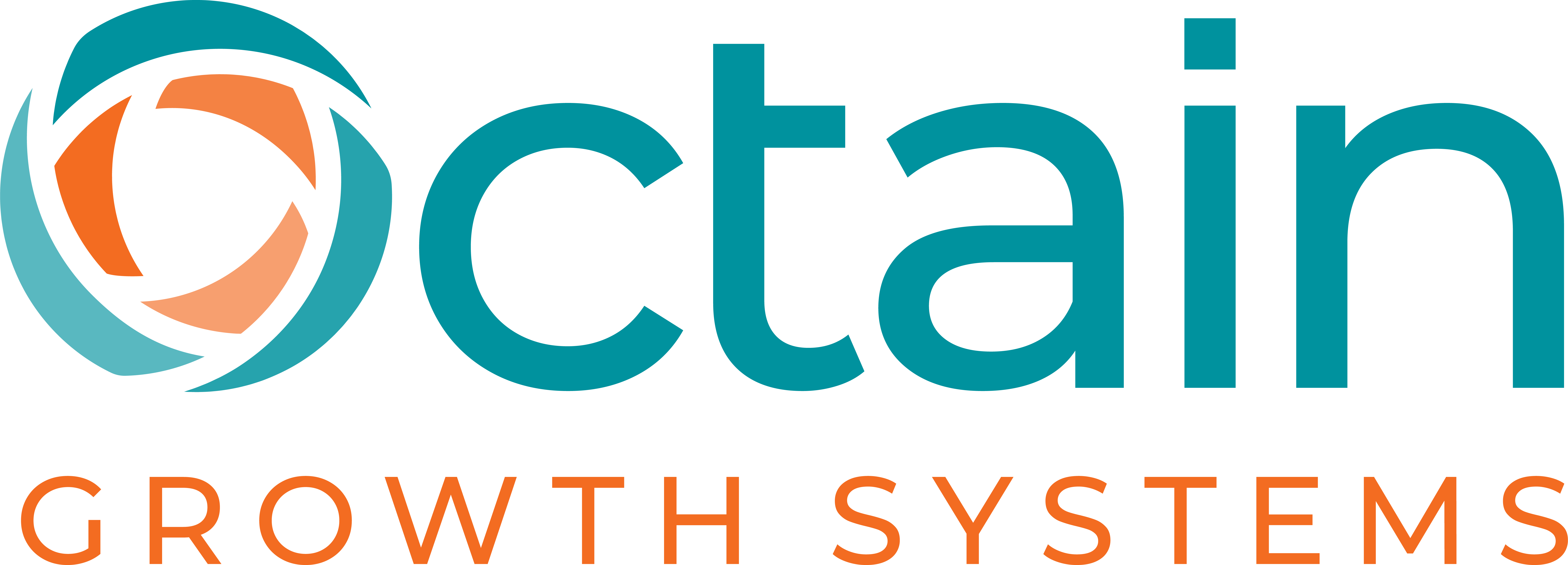When you want to grow your business, you need more!
More what?
More customers, of course!
“Get me more leads!”
That litany is a common refrain among small and midmarket size companies.
But maybe, just maybe, there is a better and easier way to grow.
Instead of casting your net broad and wide, what about casting it deep?
Go deep I say!
What do I mean by going deep?
Two things.
- Sell a wider range of your products and services to existing customers.
- Increase your focus on building loyalty with customers so you retain them longer and they are less likely to leave you even if a competitor makes them a really attractive offer.
It is not uncommon for companies to have lots of customers buying one product or service when they could be buying more from you.
A fCMO engagement by Octain Growth Architect David LaCombe discovered his client had a scenario where 61% of the customers were buying only one or two services, but 39% were buying three or more. Guess where the highest profits were? This chart tells the story.

David’s client wanted to increase its Annual Recurring Revenue (ARR) by 15%.
The company employs four Regional Sales Managers representing a portfolio of four products and ten modules.
As the above chart illustrates, 61% of their customers subscribe to two or fewer products which created a substantial opportunity to increase Revenue and Customer Lifetime Value (CLV) through a data-driven expansion strategy.
Understanding the High Cost of Customer Acquisition
To see how this works, let’s dig into the high cost of customer acquisition. Customer Acquisition Cost (CAC) refers to the total expenses a business incurs to acquire a new customer. This includes marketing costs, sales efforts, advertising spend, technology tools, and personnel costs.
Imagine you’re a mid-sized manufacturing company that produces specialized equipment. You’ve identified a potential market for your product, but it takes a series of steps to turn a prospect into a paying customer including trade show marketing ($50,000), direct sales outreach ($20,000) and custom proposals with prototypes and engineering consults ($30,000).
Now, suppose it takes your team 10 prospective leads to land one customer. This means each customer has a CAC of $10,000 from trade show and advertising costs, $2,000 for the follow-up process, and $3,000 for product customization, giving you a CAC of $15,000 per new customer.
While CAC can vary greatly, according to industry reports, the average CAC for manufacturing businesses ranges from $5,000 to $20,000 depending on the product’s complexity, market niche, and the competitiveness of the industry.
It can be even higher for a professional services company. In the professional services industry, CAC tends to be high due to the longer sales cycle and the expertise needed to close a deal. Industry benchmarks suggest that the average CAC for consulting firms can range from $10,000 to $75,000, depending on the size of the firm and the complexity of the services offered.
As you can see acquiring new customers can be a very expensive proposition!
Loyalty Drives Profitability
Now let’s contrast that with the profitability you get from the loyalty factor of retaining and expanding your relationship with existing customers as measured by Customer Lifetime Value (CLV).
CLV is the amount of money a customer is expected to spend on your services or products during their lifetime as a customer. It’s not just the value of a single sale, but the total value of all purchases, renewals, or repeat business over several years.
Different methods exist for calculating CLV, but a simplified formula looks like this:
CLV = (Average Purchase Value) x (Number of Purchases per Year) x (Average Customer Lifespan)
For professional services, where clients may engage repeatedly or for long-term contracts, CLV will include revenue from the initial contract as well as future projects, upsells, or ongoing retainers.
While CLV can vary widely depending on the type of services offered, the client size, and the length of engagement, we can say unequivocally that repeat business, expanding services and long-term contracts significantly boost CLV. Consulting firms, for example, often aim for a CLV that is at least 5-10 times the cost of acquisition (CAC).
In manufacturing, CLV tends to be much higher than in industries with shorter sales cycles because of the long-term nature of the relationship and ongoing demand for additional products, parts, or services. The average CLV for a manufacturing company can range from $100,000 to several million dollars depending on the complexity of the product and the scale of the customer.
Three Ways to Go Deeper with Your Customers
Offer Maintenance and Service Contracts: These not only provide recurring revenue but also increase customer loyalty. For manufacturers, these contracts ensure customers continue to come to you for parts and future orders.
For professional services offer a complimentary service audit or account review that gives you more opportunity to showcase value.
You can also offer a complimentary cost/benefit analysis or case study which drives value and can also be used for your content marketing.
Upsell and Cross-Sell: Look for opportunities to offer complementary products or upgrades. Do your current clients know what else you can offer them? Tell them and keep reminding them because people’s needs change.
My housekeeping service has a new text they send when you book an appointment. It goes something like this; Did you know we also offer these services: carpet cleaning, window cleaning, wipe blinds and baseboards, etc. And guess what? Last time I booked a house cleaning, I did the carpets too. Without that text I probably would have called Stanley Steamer.
Create loyalty programs: It works for hotels and airlines, as we well know! Even my vet has a nail trim card that offers a free nail trim after 10 visits. What can you offer as a loyalty program? Or as an alternative, you can opt for a gifting service, providing monthly or quarterly goodies to your best clients.
Want more ideas on how you can go deeper with your customers?

